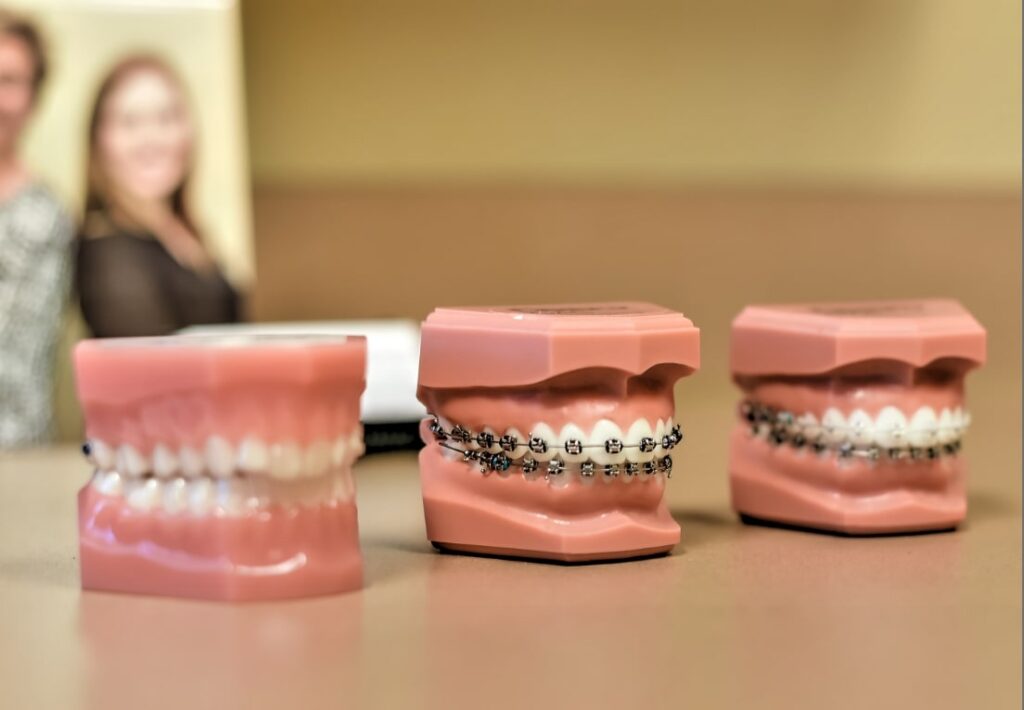What Sets Cumming Braces and Aligners Aside From Other Orthodontic Treatments
What Sets Cumming Braces and Aligners Aside From Other Orthodontic Treatments
Blog Article
Comprehensive Overview to Orthodontics Procedures for Dealing With Oral Misalignments
In the realm of orthodontics, the trip to achieving a flawlessly lined up smile involves a myriad of procedures customized to remedy dental imbalances. From traditional dental braces to unnoticeable aligners and also surgical options, the field of orthodontics offers a series of solutions to attend to varying levels of oral irregularities. Recognizing the complexities of each treatment, including their mechanisms, advantages, and potential disadvantages, is crucial in making educated decisions regarding one's orthodontic therapy. As we navigate with the comprehensive guide to orthodontic treatments for fixing oral imbalances, the intricate information of each approach will certainly unfold, shedding light on the path toward a functional and harmonious oral placement.
Orthodontic Procedures Introduction

In enhancement to clear aligners and typical dental braces, orthodontists might likewise recommend various other treatments like headgear, palatal expanders, or retainers to deal with particular alignment concerns (braces). These procedures are customized to every patient's unique needs and might include a combination of therapies to accomplish the desired outcomes. Regular adjustments and surveillance are critical components of orthodontic treatment to make certain development is on track and to make any type of required modifications along the means. By going through orthodontic treatments, individuals can not only attain a straighter smile yet also boost their general oral health and wellness and function.
Conventional Dental Braces: How They Function
When thinking about orthodontic therapies for oral imbalances, typical dental braces attract attention as a reliable approach for correcting teeth placing. Standard dental braces include braces, cables, and bands that work together to apply continuous stress on the teeth, progressively relocating them right into the preferred positioning. The brackets are attached to the teeth using an unique adhesive, and the cords are threaded via the braces. By changing the tension of the wires, orthodontists can regulate the instructions and force put on each tooth, guiding them into proper placement over time.
As pressure is used to the teeth through the braces, the bone bordering the teeth is reshaped to sustain the new tooth settings. People will require normal modifications at the orthodontist's office to make certain the braces continue to use the right pressure for efficient teeth motion.
Invisible Aligners: Advantages And Disadvantages
These clear, tailor-made trays are basically unseen when put on, making them an enticing alternative for people looking for a much more visually pleasing orthodontic treatment. Patients can get rid of the aligners before consuming or cleaning their teeth, lowering the threat of food obtaining stuck in the home appliance and streamlining the cleaning process.

Surgical Orthodontic Options
Surgical interventions in orthodontics existing feasible options for attending to complex dental imbalances that might not be efficiently settled via traditional orthodontic therapies. While invisible aligners and conventional dental braces can deal with many orthodontic problems, particular situations need medical treatment to achieve optimal results. Surgical orthodontic choices are typically recommended for extreme malocclusions, substantial jaw discrepancies, and cases where the underlying bone structure needs adjustment to attain correct placement.
One common surgical orthodontic procedure is orthognathic surgical treatment, which includes repositioning the jaws to remedy practical concerns such as trouble talking or chewing. This surgery is often performed in partnership with an orthodontist who assists line up the teeth before and after the procedure. Surgical orthodontics may also entail procedures to reveal affected teeth, get rid of excess gum tissue, or reshape the jawbone to create an extra unified face profile.
Prior to thinking about medical orthodontic alternatives, individuals go through a detailed examination to figure out the necessity and possible benefits of such treatments. cumming invisalign. While surgical procedure might seem difficult, it can considerably improve both the feature and aesthetic appeals of the smile in cases where conventional orthodontic therapies fail
Retainers and Post-Treatment Care

Post-treatment care entails adhering to the orthodontist's directions diligently. This might include appropriate oral health practices, going to follow-up appointments, and using the retainers as prescribed. Failing to follow post-treatment treatment instructions can cause relapse, where the teeth slowly return towards their initial positions. Constant retainer wear, good oral health, and regular oral exams are necessary for maintaining the results attained with orthodontic surgical treatment and making certain the long-term security of the fixed dental placement.
Conclusion
To conclude, orthodontic procedures use different choices for correcting dental misalignments. Conventional dental braces make use of steel braces and cords to shift teeth right into correct placement. Unseen aligners provide a more discreet alternative but may not appropriate for all cases. Surgical orthodontic options are available for more severe misalignments. Retainers are commonly used post-treatment to maintain the brand-new placement. On the whole, orthodontic treatments can properly boost oral health and wellness and visual appearance.
As we browse through the comprehensive overview to orthodontic procedures for fixing oral imbalances, the complex details of each approach will certainly unfold, losing light on the course toward a practical and harmonious oral positioning. - cumming aligners
One of the most typical orthodontic treatments is the usage of braces, which are composed of metal braces and wires that use gentle stress to slowly change teeth into the wanted setting.When considering orthodontic therapies for dental imbalances, traditional dental braces stand out as a tried and true approach for fixing teeth placing. Furthermore, unseen aligners may not be ideal for complex orthodontic concerns that require even more substantial teeth motion, as they are typically suggested for mild to moderate instances. Retainers are custom-made orthodontic gadgets made to hold teeth in their fixed placements after orthodontist the completion of orthodontic treatment.
Report this page